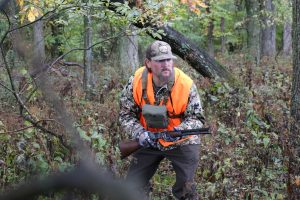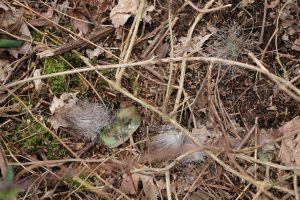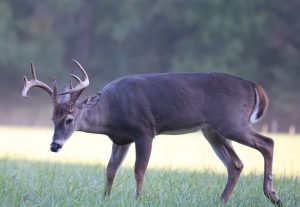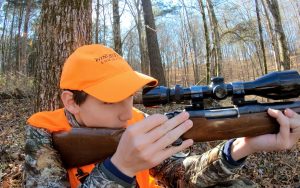Deer hunting skills that will take you to the next level.
Deer hunting is hard. While it isn’t rocket science, it isn’t the simplest of endeavors, either. It’s a lot of fun, but it’s a thing that produces failure more often than success. New hunters soon learn it takes time to learn each facet of this lifestyle. Defeat comes swiftly and often, and filled tags require some skill, significant effort, and sometimes a bit of good “luck.” Therefore, it’s best to learn important tips, tactics, and skillsets that elevate hunters from beginner to novice to experienced to expert and beyond. Then, keep leveling up.
1. Focus on Completing Objectives
Look at how predators in the wild hunt. Bears, big cats, and more. They’re laser-focused on the task. Likewise, scatterbrained deer hunters aren’t as effective as focused hunters. Always focus on completing objectives, whether honing a shooting skill, patterning a deer, executing a shot during the hunt, etc. The more focused you are, the better you’ll be and the better the outcome.

2. Put in That Sweat Equity
Hunters can put in sweat equity in multiple ways. Traditionally, the term applies to working on a hunting property to improve it. Furthermore, most people are hands-on learners. It can also apply to enhancing hunting skills. Putting in the work improves cognitive recall, motor skills, and more. Essentially, doing the work to improve a skill almost always results in better outcomes.
3. Learn to Read Hunting Grounds
Reading a property and gauging its potential is a skill in and of itself. Seeing it via apps, maps, and in person and breaking it down from a hunting perspective takes time to learn. This impacts determining where deer bed, feed, water, travel, and more. It also involves choosing treestand and blind locations, as well as selecting entry and exit routes.
4. Determine Tree Species
Many of the woodsmanship skills of old are fading. One of these is accurately determining tree species. Being able to assess a tree’s leaf, bark, and mast (if applicable) is something every hunter should be able to do. This impacts locating food-based trees and more, which influences deer movement, stand locations, etc.
5. Read Maps Correctly
There are many different types of app layers and maps. Hunters who read these correctly are likelier to find and harvest deer than those who don’t. This especially applies to hunting new ground, whether it be private or public land. Reading maps correctly is an important skill to master.
6. Learn to Scout Digitally
Digital scouting is an in-depth skill, and it goes well beyond as described here. That said, this applies to private and public lands alike. Studying the factors that can be assessed from afar (without seeing the land in person) is an important element. For example, a small tract tucked into a large area of ground might indicate fewer hunters in the area, a better buck age structure, less overall hunting pressure, and more. Also, hunters can study topo maps to gauge terrain, and other maps to guestimate habitat quality. Some wildlife agencies also publish harvest data for specific counties, record-keeping organizations publish top-end potential, and more. Modern apps, such as HuntStand, offer myriad app tools and layers that make digital scouting easier and more effective.
7. Read That Deer Sign

Reading deer sign is another skillset that hunters benefit from. Recognizing deer tracks, ground disturbances, scat, beds, rubs, scrapes, and other sign isn’t easy to master. Still, it’s a skill worth prioritizing. Furthermore, analyzing said sign, interpreting it, and planning around it is even more difficult to master. It’s a crucial part of elevating a hunter’s overall effectiveness.
8. Reverse Engineer Deer Patterns
The best hunt plans require understanding where deer bed, feed, water, and more. It hinges on understanding the trails, travel routes, and patterns that emerge from these things. Oftentimes, it’s much easier to determine where a deer eats than sleeps. Thus, if you know the former, but not the latter, it’s necessary to reverse engineer that pattern.
9. Pick a Good Weapons Fit
A hunter who’s comfortable and effective with a weapon is better off than with one they aren’t. It’s crucial to pick a good weapon fit. Finding a bow, crossbow, or gun that fits their frame and strength is a significant part of the weapons selection process.
10. Find New Hunting Ground
A hunter is only as good as the land they hunt on. Finding better ground can automatically increase their success. The skill is learning how to find new and better ground. The next level comes when you start shooting more and bigger deer because of it.
11. Walk with Some Finesse
Walking quietly is a critical part of deer hunting. Being able to sneak in and out of the woods without alerting deer and other game isn’t easy, but improving this ability can greatly change the outcome of the hunt, season, etc. Learning key skills, such as the heel-to-toe or fox trot, are ways to accomplish this.
12. Still-Hunt with Efficiency
Still hunting is an older tactic that isn’t used as often as it once was. Still hunting with efficiency is a dying art, but some hunters maintain it. Those who become proficient in the art of still-hunting stand to see and harvest more, and perhaps bigger, whitetails. Like all tactics, it has a time and place for use.
13. Age a Buck on the Hoof
Aging a live whitetail buck on the hoof isn’t easy. It gets especially difficult beyond certain age classes. For example, 1 ½-year-old (yearling) bucks are easy to age. So are 2 ½-year-old and sometimes 3½-year-old deer. Of course, 4 ½-, 5 ½-, and 6 ½-year-old bucks are more challenging to age on the hoof but are certainly easy enough to guestimate accurately with consistency. This ability is important for those who value harvesting older, more mature bucks, and those who strive to improve the buck age structure within the local deer herd.

14. Field Judge a Buck’s Rack
Field-judging a buck’s rack is another skill like aging a deer on the hoof. This isn’t related to the age of the deer, but rather, the score of its antlers. For example, if a buck is in front of a hunter, they’d quickly analyze the antler size and characteristics. Then, they’d promptly guestimate its score. (The skill also applies to guestimating via trail camera photos.) The very best at this skillset can get within an inch or two of the actual gross or net score. But getting within 5-7 inches is quite impressive.
15. Pass a Good Buck
Those who hope to shoot very big deer won’t do so if they shoot the first big deer that walks by. It’s important to pass good, and even big, deer to have, see, and shoot the caliber of bucks hunters hope for. Set harvest goals and be willing to pass on deer that don’t meet these.
16. Learn to Judge Yardage
Rangefinders are incredible tools, but sometimes, hunters don’t have enough time to range a deer. Or, they might range it, only for the deer to move closer or further away. Being able to judge yardage without a rangefinder is a crucial skill for hunters. It’s needed less often than it isn’t, but it’s good to have when that moment presents itself.
17. Take a Good, Fast Shot

Some hunters wait for the perfect shot opportunity. That’s noble but ineffective for hunting. Instead, take the first good shot opportunity — not the perfect one. Oftentimes, the perfect opportunity never comes, and the hunter watches that buck walk away. When a deer is within range, turns broadside, slightly quartering-away, or even quartering-to (situation depending), and you’re comfortable, take that shot. Letting good opportunities slide past is a great way to eat tags.
18. Pack a Deer Out of the Field
There are numerous ways to get deer out of the field. Dragging the traditional way. Dragging via sleds. Pulling via carts. Carrying deer on your back (over or the shoulders or backpack style). Packing on a meat pole. Processing in the field and carrying it out on meat packs. These methods and more are all individual skills. Learning each of these and be more prepared to get deer out of the field.
19. Learn How to Fail
Deer hunting is a journey. We fail more often than we succeed. But we learn, improve, and keep moving. Part of that process is learning how to fail. That, too, is a skillset. It requires mastering a mindset. And it’s one that serves hunters well.
20. Commit to Betterment
No matter where you are in your deer hunting journey, make a conscious commitment to betterment and stick to it. Don’t slack. Keep pushing forward. Don’t stop improving in each area and individual skill set you wish to master. Stay the course; one day, you’ll look back and realize just how far you’ve come. And you just might have some great deer hunting memories and a few good bucks to show for it.
Read Also: How To Hunt – A Guide for Aspiring Hunters
Per our affiliate disclosure, we may earn revenue from the products available on this page. To learn more about how we test gear, click here.


